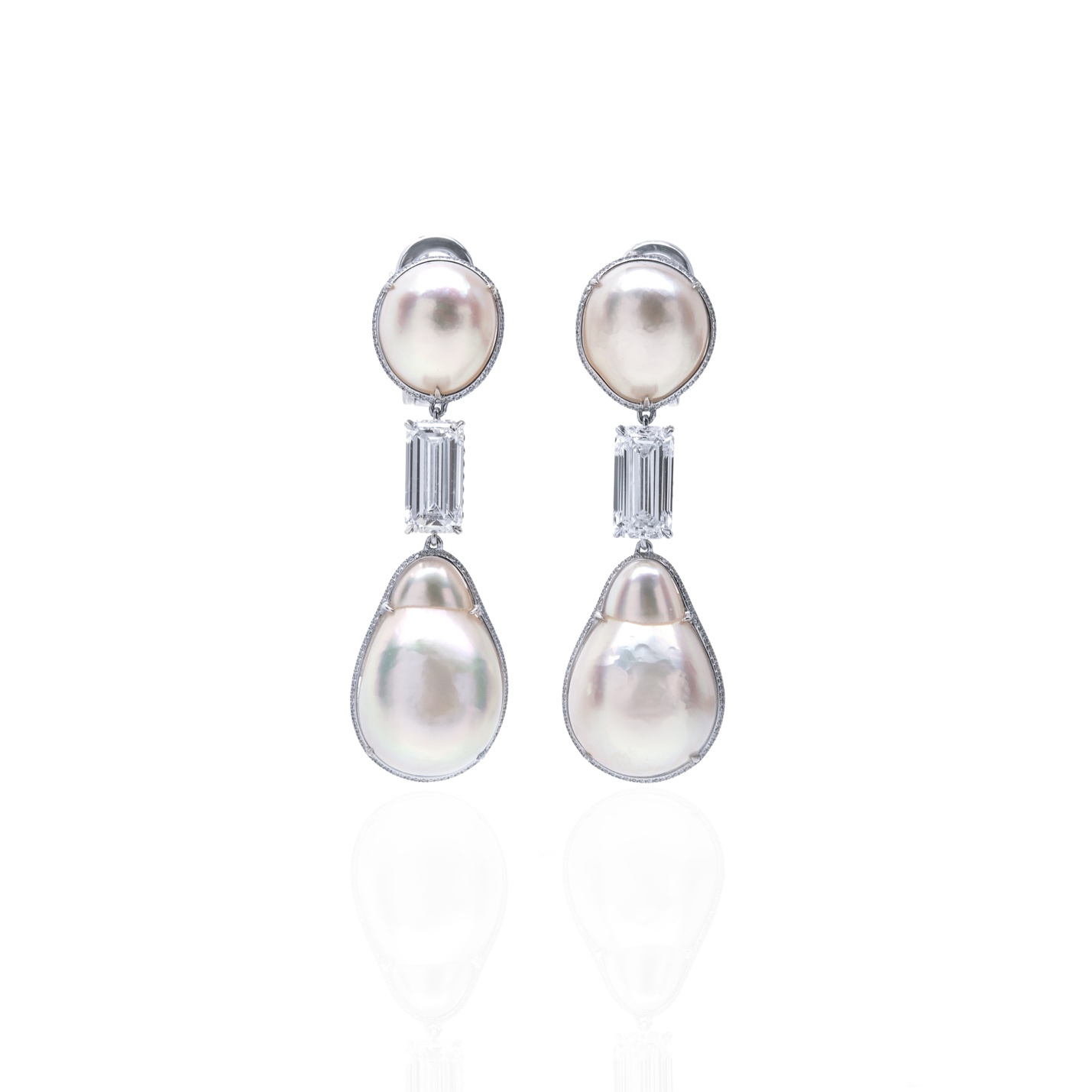Quality Factors of Pearls

Size: The size of a pearl can reach 20 mm or more. Large pearls of high quality are rare and expensive.
Weight: The weight of a pearl is usually indicated in carat (ct). 1 ct = 0.2 grams (g). Note that most cultured pearls are not sold by weight but by size (mm). The weight of natural pearls may also be indicated in grains. 1 grain = 0.25 ct = 0.05 g.
Shape: The evenness of the shape is an essential criterion of quality. The most critical shapes are round, oval, drop, button, barrel, and baroque.

A range of different natural pearls of different shapes. Photo: Michael Krzemnicki, SSEF.
Color: The body color of a pearl is often superposed by an iridescence effect (the ‘orient‘ of the pearl). Typical body colors for pearls include White, slightly cream to cream, yellow, orange, brown, black, grey, and rosé.

Examples of different body colors of cultured pearls. Photos: SSEF.
Orient: The iridescent colors produced by the thin aragonite platelets on the surface of a pearl. By their regular layering, they produce color interference that determines the orient of a pearl.

Left: A schematic diagram (modified after Gem-A) showing how incoming light is reflected and refracted on the aragonite tablets that form the nacreous layer of a pearl. Centre: A cross-section of regularly organized aragonite platelets on a pearl. Right: Depending on how the layers are organized and the angle at which light is reflected and refracted, different colors will be present in a pearl.
The orient can result in rosé, green, and other overtones in body color. Pearls with a dark body color generally show this iridescence effect better than light-colored ones.

A Tahitian cultured pearl with beautiful orient. The rosé, purple, green, and blue hues that are visible are not body colors but due to diffraction on the thin aragonite platelets. Photo: Laurent Cartier, SSEF.
Lustre: The thin aragonite platelets reflect and diffuse incoming light, resulting in a characteristic pearly luster. The better the luster, the higher the quality of a pearl. A polishing process can often enhance the luster of a pearl.

Example of four exceptional natural pearls with an attractive luster. These earrings contain natural pearls, cultured pearls, and diamonds, by Etcetera for Paspaley, sold in 2018 for US$ 1.01 million at Christie’s. Photo: SSEF.
Surface condition: A high-quality pearl has few or no blemishes. Criteria for the surface condition include smoothness, evenness of the surface, and whether it is free of surface irregularities.

Examples of different surface conditions: a cultured pearl with surface blemishes. Photos: SSEF.

Examples of different surface conditions: a smooth oval cultured pearl from French Polynesia. Photos: SSEF.
Homogeneity of a strand: If pearls are strung on a necklace as a strand, for example, the homogeneity of the pearls (how much they look alike and resemble in quality) on that strand will be a determining factor in the quality and valuation of that pearl strand.
Thickness of nacre: Beaded cultured pearls are the norm for Akoya, South Sea, and Tahitian cultured pearls. The nacre thickness can be a determining quality factor. The cultured pearls below were cut to show the cross-section (nucleus/bead visible in the center). To avoid cutting, a pearl can be X-rayed, and the nacre thickness can be measured.

Different nacre thicknesses in marine cultured pearls, decreasing from left to right. Photo: H.A. Hänni & SSEF.
Source: Swiss Gemmological Institute (SSEF)